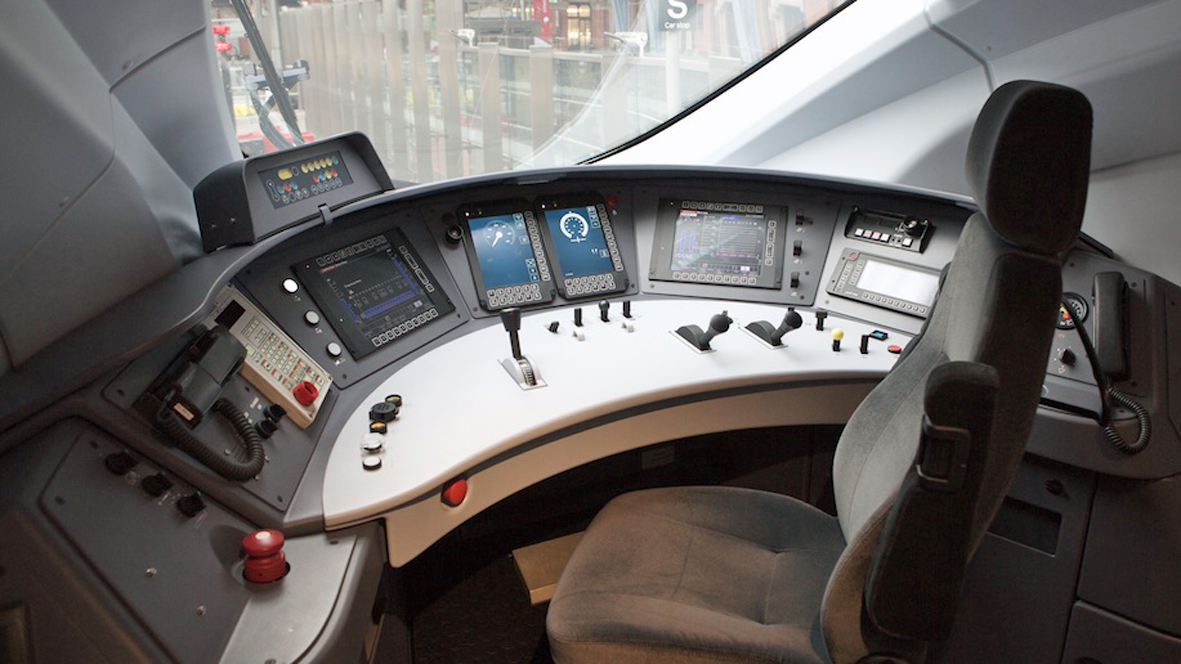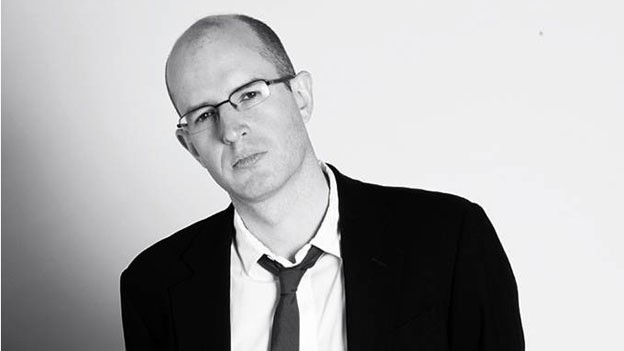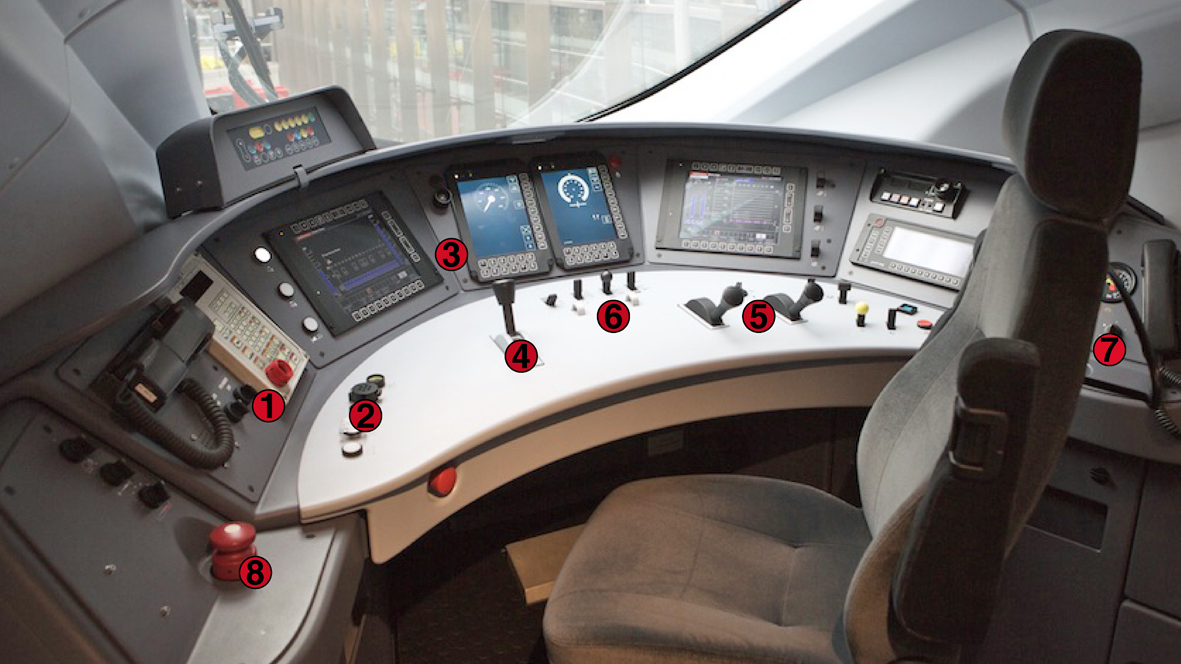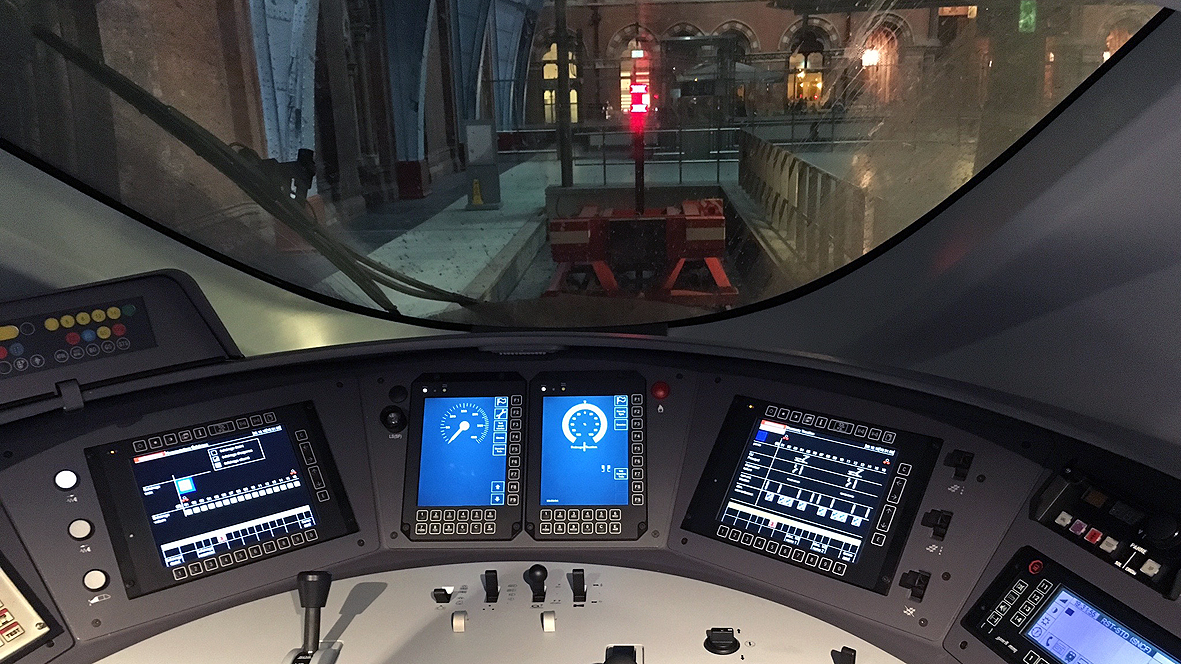

The new Eurostar comes into service "definitely this year", and you can read about our trip down its new-smelling corridors here.Now, ever wondered what all those buttons and knobs and levers on the driver's console do? Good. Here's our (extremely) rough guide…

1. The white panel with the big red button is the radio.The handset is part of the cab signalling radio. Used to communicate with the signaller. In the signal box. Obvs.
2. Door controls.
3. 4x "Driver information screens". Obviously. The driver can select what info he wants to see and where, from a menu that includes speed, pantograph status (that's the equipment on the roof that connects to the power cables), door status (open/closed/locked), brake status (applied/not applied), train diagnostics, air pressures, brake pressures and so on.
4. Brake. This is quite important as the Eurostar (the Siemens-built e320) has a top speed of 200mph.
5. Traction. Aka "the levers that make it go". The opposite of the brake. We asked for clarification on how these worked and were actuallytold, "If we go into any more detail it gets too complicated." And you thought driving a train just involved holding a button down…
6. Controls for the train's external lights. "Put the hazards on, Dave, I need to pull over and check the map."
Sign up to the T3 newsletter for smarter living straight to your inbox
Get all the latest news, reviews, deals and buying guides on gorgeous tech, home and active products from the T3 experts
7. (Partly obscured by chair) The windscreen wipers. The windscreen also has a hefty retractable cover to prevent glare/ buzzard strikes. Well, probably not the latter but joking aside, we were once on a train that was hit by a buzzard, and it actually broke the windscreen. Didn't do the buzzard much good, either.
8. We can only assume this one launches the missiles. No, okay, it's an emergency brake. Similarly, the red button under the desk (near the chair) is not, in fact, a secret panic button in the event of pirates storming the cab, it's an emergency button to lower the pantographs on the roof, cutting off the power to the train.
Duncan is the former lifestyle editor of T3 and has been writing about tech for almost 15 years. He has covered everything from smartphones to headphones, TV to AC and air fryers to the movies of James Bond and obscure anime. His current brief is everything to do with the home and kitchen, which is good because he is an excellent cook, if he says so himself. He also covers cycling and ebikes – like over-using italics, this is another passion of his. In his long and varied lifestyle-tech career he is one of the few people to have been a fitness editor despite being unfit and a cars editor for not one but two websites, despite being unable to drive. He also has about 400 vacuum cleaners, and is possibly the UK's leading expert on cordless vacuum cleaners, despite being decidedly messy. A cricket fan for over 30 years, he also recently become T3's cricket editor, writing about how to stream obscure T20 tournaments, and turning out some typically no-nonsense opinions on the world's top teams and players.
Before T3, Duncan was a music and film reviewer, worked for a magazine about gambling that employed a surprisingly large number of convicted criminals, and then a magazine called Bizarre that was essentially like a cross between Reddit and DeviantArt, before the invention of the internet. There was also a lengthy period where he essentially wrote all of T3 magazine every month for about 3 years.
A broadcaster, raconteur and public speaker, Duncan used to be on telly loads, but an unfortunate incident put a stop to that, so he now largely contents himself with telling people, "I used to be on the TV, you know."


